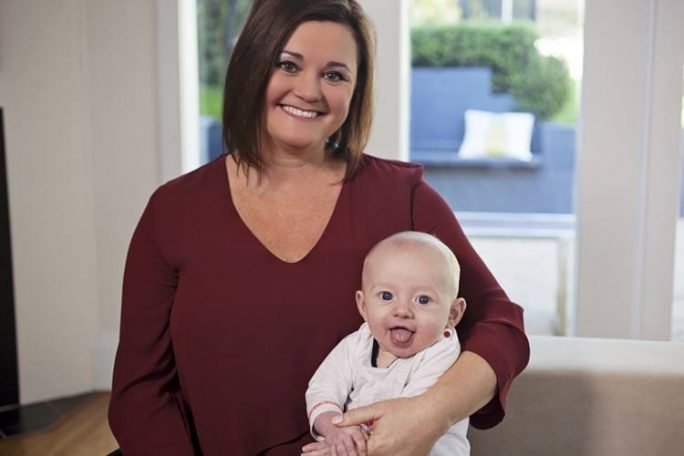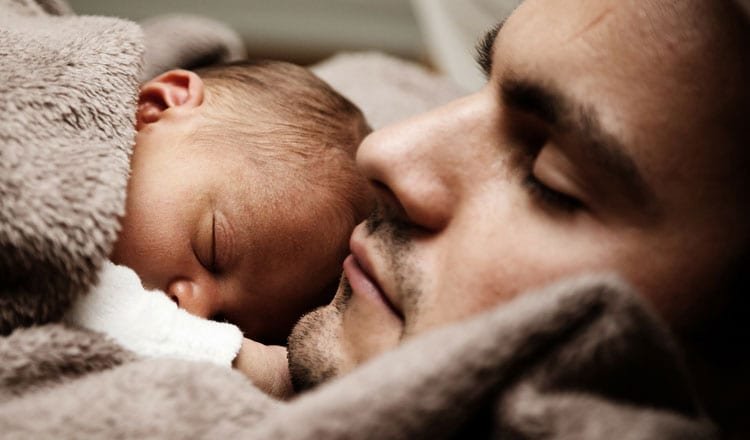Given parents lose an average of 350 hours of sleep in their baby’s first year, it’s no surprise that ‘how do I get my baby to sleep?’ is their number one question, says Australian parenting expert Jen Hamilton.
Each developmental stage of the baby requires modified techniques to support their quality of sleep, says Jen, below, founder of parenting app WOTBaby.

Through her professional experiences, including having three kids of her own, Jen has established successful feeding, sleep and settling techniques that she believes will ensure babies (and subsequently everyone else in the household) gets some rest.
Jen’s methods centre around educating parents to build their confidence and establish consistency from the very beginning.
“Babies are born with around 20% brain development, they are a blank canvas and it’s up to parents to provide them with the ongoing skills and support to learn to sleep as they grow,” she says.
Below, Jen shares her top settling and sleeping techniques for newborns through to six-months-old.
0-2 weeks
Post feed a tight wrap and cuddle will help them nod off again.
2-6 weeks
- Try music to help sooth baby.
- If you are co-sleeping be mindful of baby as they are more affected by their surroundings now.
- Babies are noisy sleepers and this tends to make mum and dad more aware of them, if you are co-sleeping or bub is in a bassinet next to your bed and baby is keeping you up, perhaps it’s time to move bub to their own space.
- Ideally during the day start to put baby down drowsy, but awake, so they begin to leans skills to self-settle and fall asleep on their own.
6-12 weeks
- Prime the environment for sleep; draw curtains, play music, start speaking in a softer voice as you prepare bub for bed.
- Make sure all needs are met: check nappy and ensure bub is firmly snug and comfortable to give bub the best possible chance of nodding off.
- Ensure the focus remains on winding bub down and not over stimulating.
- Continue to put baby to bed down awake, so that self-settling skills can build, however, remember that bub is now getting more used to his sleeping environment and may take 20-40 minutes to fall asleep.
3-4 months
- Cat-napping of one sleep cycle (40 minutes) is more likely if the baby is not learning to put themselves to sleep.
- In this age bracket it is crucial for baby to be able to put themselves to sleep as the quality of the sleep will be better. It can take babies up to 30 minutes to fall asleep.
4-6 months
- If you are rocking, patting or feeding the baby to sleep it might not work or take longer then it used to, as they are more aware of the world around them.
- Play has become a big part of life and interaction is being learnt. As a parent you are responsible for teaching the different Windows Of Time; sleep, play, feed, settle and re-settle. At sleep time do not engage too much, ensuring that you are not showing them it is play time. Bubs get confused and benefit from consistent direction and regular patterns of behaviour.
Still not sleeping? Jen also suggest trying the below:
Put baby in their own room – Consider putting baby in their own room if you and baby’s sleep is often disturbed for other reasons, besides feeding.
Noise is good – use background music as a tool for helping to put baby to sleep. Soft music is not only a good sleep cue, but it will serve as a distraction to the outside world and help put baby in a relaxed state conducive to sleep.
Crying is not necessarily a negative – Once you have ensured all bub’s needs are met, leave them to settle and go back in to reassure them only if necessary. Listen to their cry and learn to identify the ‘grizzle cry’ generally associated with them trying to put themselves to sleep. Also, if there are pauses between cries baby is just trying to self-settle.
Settle in a dark room – Be aware of stimulation and even in the day, draw the curtains and put baby to sleep in a darkened room.
Why isn’t rocking working anymore? – As baby grows and becomes more aware of their surroundings, rocking may only serve as a further distraction and prevent sleep.
For more advice, flowcharts and instructional videos click here.








